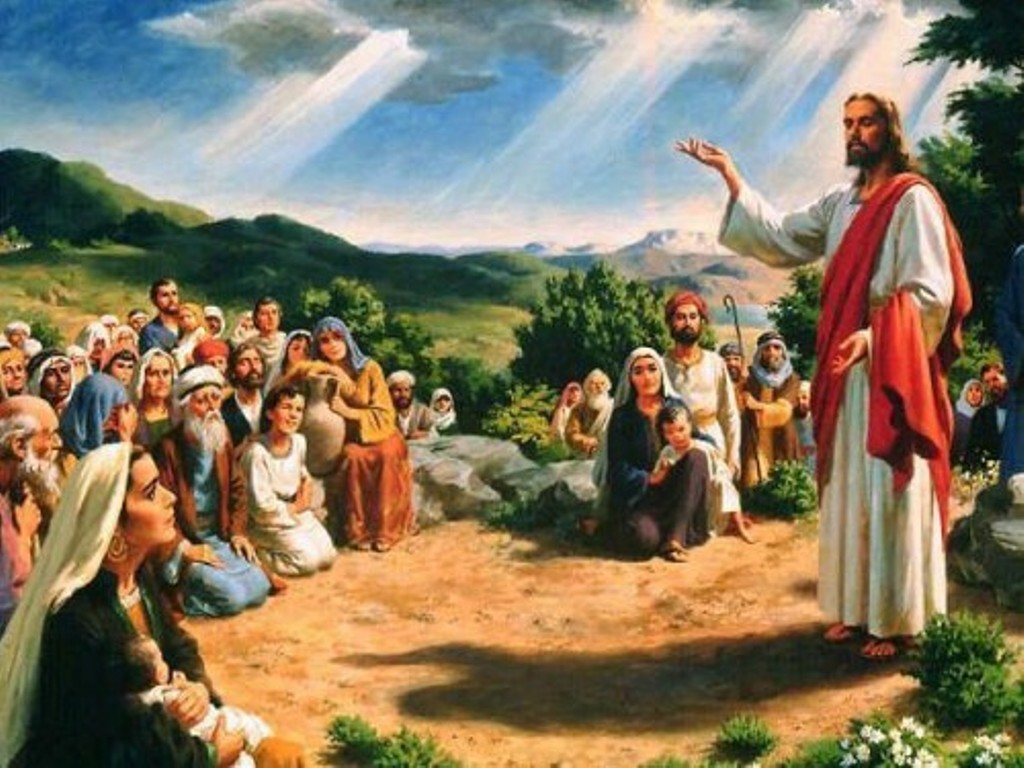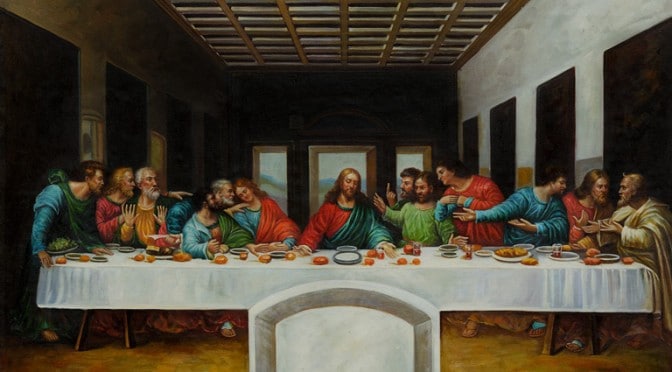The Good Samaritan, Discover his Parable
There is a parable well known by the vast majority of believers in God called the parable of the Good Samaritan, it is established in one of the best known books in the world, the Bible. We invite the reader to learn more about it in this article.
The parable of the good Samaritan is one of the best known parables of Jesus, established as we said at the beginning in the Bible in the Gospel of Luke, chapter 10, verses 29-37. She is established as one of the most real and revealing of the teaching of Jesus himself.
The parable of the Good Samaritan has a characteristic regarding those that deal with parables of mercy in the Gospel of Luke. This parable is told by Jesus Christ himself in order to publicize charity, mercy and virtues, which should be guides for man in terms of holiness and piety.
It also determines compliance with the law in terms of love, since compliance with the law and its established letter is more important. Also within this parable, Jesus enlarges the term neighbor.
The naming of the figure of a Samaritan, who was considered a heretic among the Orthodox and Hebrews, has served to determine the concept of neighbor at the time.
Faith must be manifested through works, actions, this was what Jesus taught with this parable, by means of which he demonstrates that faith must be revealed, revolutionizing the concept of religious life.
The history
The beginning of the narration is established by means of a doctor who asks Jesus, encouraged to put him to the test about what he should do in order to obtain eternal life. The answer to this is determined by Jesus through a question about what is written in the law of Moses.
Regarding the above, the lawyer establishes in two ways in the Bible itself: “You shall love the Lord your God with all your heart, with all your soul and with all your strength” and the law in a collated way determines “you shall love your neighbor as to yourself”.
Jesus tells him that he had given the correct answer and invites them to behave later. In relation to this, the doctor of the law asked Jesus one more question to defend his previous participation, which gave rise to the explanation of the parable.
In this case Jesus trying to justify himself commented: and, who is my neighbor?. Jesus questions: «A man was going down from Jerusalem to Jericho, and he was seized by bandits, who, after taking what he was carrying and beating him, left him, leaving him half dead. By chance at that moment a priest was coming down the road, and seeing him he made a detour. Likewise, a Levite passed by and saw him and took a detour. However, a Samaritan who was also passing the same road came to him, and seeing him had compassion.
When he approaches, he bandages the wounds and proceeds to pour oil and wine on him, mounts him on his horse, takes him to a place giving him lodging and takes care of him. The next day he proceeds and taking money from the time (denarios) he gives them to the innkeeper and tells him: “Take care of him and, if you spend anything else, I will pay you when I return.”
Jesus immediately asks: which of the three do you think was a neighbor of the one who fell into the hands of the bandits? The doctor replies: “The one who showed mercy to him.” Jesus tells him to “Go and do the same.”
We must observe that Jesus does not define anything, as the doctor intended, he did not say who is the neighbor, but instead says that who acted as a neighbor of the wounded. Observing the text we can notice that “neighbor” is given the term to that person who has a feeling of love and compassion towards another person.
passage structure
The passage or parable implicit in the Gospel of Luke has some elements, to be determined:
Question of a teacher of the law.
Jesus’ second question.
Replica of the teacher of the law.
Order given from Jesus.
Another question from the master of the law.
Jesus’ counter question dealing with the parable of the Good Samaritan.
Answer from the teacher of the law.
Ordinance of Jesus.
Geographical space in which it takes place: road from Jerusalem to Jericho
At that time, it was common to observe how there was danger and difficulty on the road that led from Jerusalem to Jericho, this was famous as the “road of blood”, because there the blood of deaths occurred due to robbers or thieves was shed. .
This path had the characteristic that its beginning was 750 meters above sea level and it descended a thousand meters until it reached Jericho, in the Jordan Valley; between 7 and 258 meters below sea level.
The road to Jerusalem is described by Martin Luther King, the last day before he was assassinated, it was pronounced on April 3, 1968 in the title I’ve Been to the Mountaintop, in said title Luther King described it thus:
I remember when my wife and I first went to Jerusalem. We moved from Jerusalem to Jericho. Arriving at the road, I commented to my wife: “Now I know why Jesus Christ used this as the setting for his parable.” It is a crooked, winding road, it really lends itself to an ambush, it is dangerous.
In the time of Jesus, it was known as the “bloody path.” And as can be seen in the text, it could be that the priest and the Levite looked with some pride at the man lying on the ground and had doubts if the criminals were still lurking around.
It is also possible that they felt that the man on the ground would be dramatizing, and making them think that they had robbed and injured him with the purpose of apprehending them quickly and easily.
It is when the first question arises from the priest, it was: “If I help this man, what will happen to me?” However, the Samaritan approached him. At this point he turns the question around and says, “If I don’t stand up and help this man, what will happen to him?”
Characters of the parable
As the reader can see in this parable of the Good Samaritan, two characters intervene: the priest and the Levite, who walk in front of the traumatized Jew whom they totally ignore, continuing on their way.
The priest
If we look at the priest, the text determines that he went down that road, the road to Jericho is understood. The law of that time indicated that the person who touched a dead and bloody person would be considered impure until nightfall, and for this reason he was not allowed to participate in religious rituals.
In the book of Leviticus it was clearly stated that the priest was forbidden to have contact with any dead person, not only at the beginning of the temple service but in his daily life, unless they were the remains of close relatives.
One could think of the following hypothesis, if the Levite also went from Jerusalem to Jericho, it should be thought that nothing was an obstacle for him to touch the “dead on the road”.
According to Joachim Jeremias determines that it could be thought that it was a ritual reason and therefore he was on the road to Jerusalem, for reasons of service to the temple.
The text, however, does not reject this possibility. There is another characteristic that are the sections that at that time the priests, laymen and Levites made to go up to Jerusalem in groups, and they did not go up alone.
As for the foregoing regarding repairs and rituals, it is difficult to think that he would be delayed since he was going alone, or because it could correspond to the temple service providers (archilevites).
Karris also determines: “these two representatives of the obedience of the law are not in favor of helping the man who was outraged, dispossessed and was as if dead, for fear of contaminating himself.”
If we follow this determination, the symbology of the priest and the Levite is not seen as lack of mercy or cruelty, only formal or ritual procedures in terms of mercy and forgiveness are observed.
Regarding this position in the balance is the spirit of the law and what the letter of the law establishes, this is one of the supports on which the teaching of Jesus Christ is sustained, as well as the Old Testament, establishing: “mercy I want and not sacrifices.
In another order of ideas, Joachim Jeremías makes a suggestion that Jesus did not precisely have the Sadducean precept in his sight, which established that he could not touch the dead because it would be impure; perhaps it was just describing the priest and Levite as “insensitive and cowardly”, lacking compassion and indifference to the pain of others.
the samaritan
The image shown about the Samaritan as a pious savior of the unfortunate and outraged Jew, determines the true concept regarding the term “neighbor”. The Samaritans and the Jews were considered irreconcilable enemies; among them they were considered heretics.
The Jews had their reasons based on the fact that the Samaritans practiced their cults on Mount Garizim, unlike the Temple in Jerusalem. Besides, only Moses was a prophet for them, not recognizing the tradition of the Talmud, nor the book of the prophets nor of the writings.
As for the Samaritans, they were enemies of the Jews and there was hatred among them, for the reason that they destroyed and profaned the sanctuary of Garizim.
So that the mention of the priest and the Levite is not considered unintentional. Likewise, it is no coincidence that the condition of a Samaritan is attributed to the man of mercy.
This is very determined to highlight the notion of neighbor that Jesus Christ wants to teach. Since this is about the brief and strengthened wisdom of his parable of the good Samaritan: love of neighbor is to do what he did, and the neighbor is this one, a Samaritan or a stranger.
fundamental teaching
The parabola has two characteristics, namely:
The announcement that Jews can see the law and participate in eternal life and a lesson on mercy towards the dispossessed or needy.
Jesus makes no difference between men in relation to this issue: all are considered “neighbors” regardless of religion, political ideas, nationality, since the term neighbor has a close or close meaning. Likewise, differentiation is made regarding the practice of the commandment of love since it is established that it is for everyone in general.
Jesus chooses a Samaritan to show the concept of a subject of unlimited extension.
Raymond Edward Brown
Regarding this, it determines that the parable aims to “stop the reader’s attention to summon him to imitate the attitude of a Samaritan”.
Symbology and importance
As we said in previous paragraphs, it is one of the most famous parables in the New Testament, its application is of such significance today as a Samaritan as for the Western culture of a generous, kind person who is willing to help the dispossessed or needy.
The “good Samaritan” of this parable becomes a typical symbol of the brotherhood of humans. It is also considered one of the fundamental biblical teachings for work on human rights.
the good samaritan for kids
In this sense, it is good to touch on this topic in that they are shown the parable of the Good Samaritan for children , this should have as an objective that they feel the desire and need to give love to all people, especially the most dispossessed.
How to prepare them
It should be studied through prayer. After the study of the lesson, the method to be used to illustrate the Biblical Scriptures to the children will be decided.
As a next step we will read the complementary word: John 14:15, 21; 1 and John 4:20–21. We should look for a guide from the Study of the Scriptures in relation to what the “Priest” and “Levi” mention. (In the latter we must especially read what is said of the Levites.)
We must choose which questions we will analyze and the related activities that promote the intervention of children and allow them to achieve the objective of teaching.
The materials to use
Copy of the Bible or the New Testament for each child.
Sheets where the parable of the good samaritan is observed.
Map of the Holy Land.
Suggestions for Teaching the Parable to Children
As a suggestion we can ask a child to read the first sentence.
Attention grabbing activity
We must call the child by his name and ask him who is your neighbor? This is so that the lesson helps you understand Jesus’ own teaching about knowing who our neighbor is.
We can ask the question to several children. The reason and the moral that is to be achieved about what Jesus teaches about our neighbor and how we should treat them should be explained to the children.
One of the children can be asked to read the Gospel of Matthew 22:34–40, and then discuss the importance of loving others.
scripture narrative
We must place in view the pictures that we have on the parable of the good Samaritan as well as the map of the Holy Land or other material that we have. The parable should be taught as set forth in Luke 10:25–37.
As a suggestion we can show the children where Judea and Samaria are located on the map and proceed to explain the situation that was established between Jews and Samaritans.
The Jews thought that they were better than the Samaritans and due to this attitude it was so much so that when traveling from Jerusalem to Galilee, they made the longest journey through the Jordan Valley in order not to cross Samaria.
Complementary activities
As other elements that we will put into practice in terms of teaching children about the study of the parable of the Good Samaritan, we have:
Let us make the home a place where the Spirit of the Heavenly Father is constantly present.
Share the scriptures.
We should talk to him boy.
Pray with the children at all times or frequently.
Inculcate obedience to the commandments.
Inculcate the need to serve others with love and kindness.
Pray that the Spirit of our Heavenly Father will be in the home with each of us as his children.
Motivate them to read the 10 Commandments. Also participate in the 10 commandments that Jesus Christ shows us in Matthew.
Help the children understand that by practicing the 10 Commandments we show love to Heavenly Father.
We must have the children learn the reading of Matthew 22:37–39 by heart.
Practice special songs or hymns.
conclusion
In conclusion, we must with all responsibility get children to express their love for Jesus and Heavenly Father; as well as demonstrate gratitude for the scriptures.
We must also teach them to practice the love that Jesus had for their neighbor from the heart and without expecting anything in return, only with the feeling of generosity, kindness and love for others.
We must keep praying and reading the Scriptures at home (Luke 10:25–37) as well as motivate them at all times to practice good and believe in Jesus and his teachings.
As a conclusion we can also determine that with the parable of the good Samaritan that we have studied in this article, Jesus invites us to the feeling of true love towards our neighbor and that we see in this act of true love.
He also invites us to be humble of heart and true practitioners of his commandments and teachings given not only in relation to the parable, but in so many teachings that Jesus left us.
All this with the aim that we put them into practice in our daily lives and be better human beings with each other. So be it.

Hello! Let me enthusiastically introduce myself as a dedicated blogger fueled by an intense passion for meticulously crafting insightful and well-researched blogs. My mission revolves around providing you, dear readers, with a veritable treasure trove of invaluable information.







